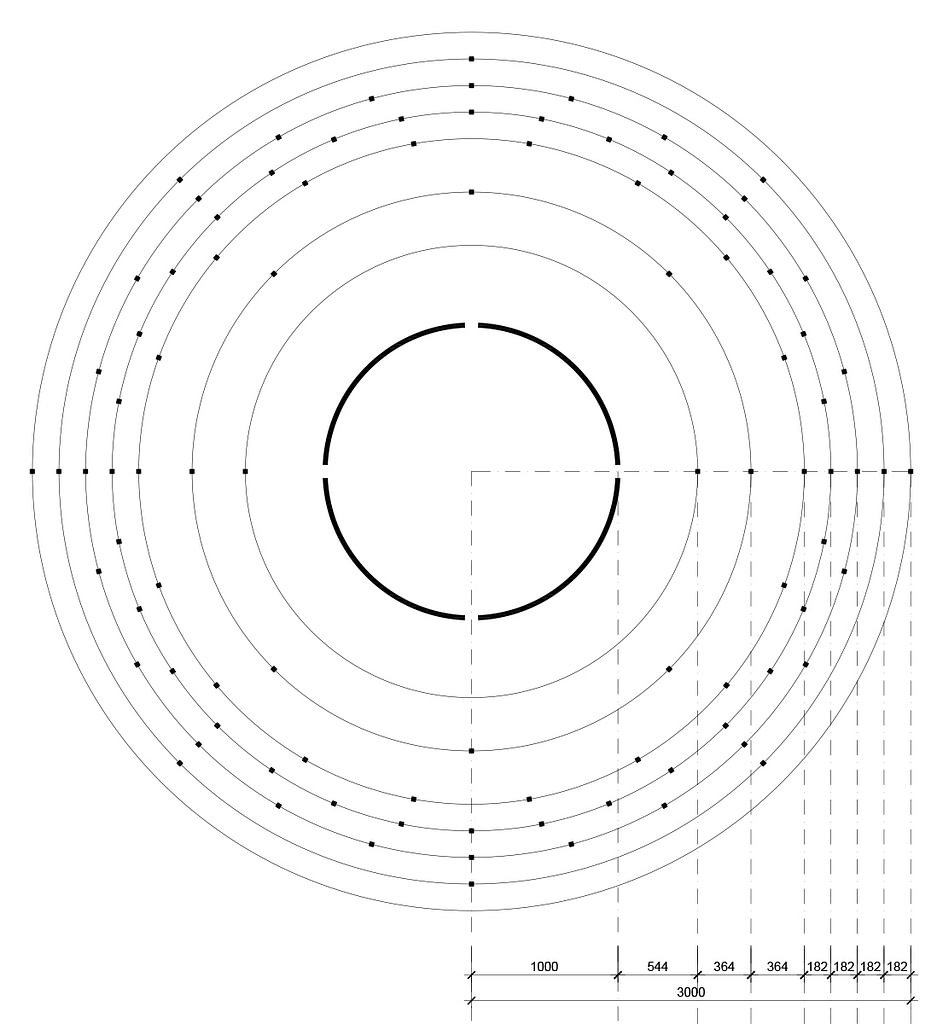A Clock of Salt, Rock, Wind, and Rain

Our competition entry for a marker to a nuclear waste isolation pilot plant in New Mexico made its way through to the final. Drawing on the works of land artists such as Robert Smithson and Michael Heizer, we proposed concentric rings of basalt on which sit ninety-four salt and sandstone pillars, varying in height from the outer ring to the innermost, positioned so that in plan they reflect the electrons in the atomic structure of plutonium-239. Inside these rings is a final marker constructed by ninety-four basalt monoliths over-clad on the outer face with the salt-rock composite. The inner faces contain warnings in multiple languages and symbols about what lies beneath.
The pillars and wall are a monumental clock; the salt-rock composite weathers away over a period of 10,000 years. The change in height between each ring means the weathering is progressive – the outer ring will weather away in 900 years, the penultimate ring 7,500 years and the inner wall will last for the full 10,000 year timeline. When it has all weathered away the basalt rings and monoliths will be left behind as a reminder.
